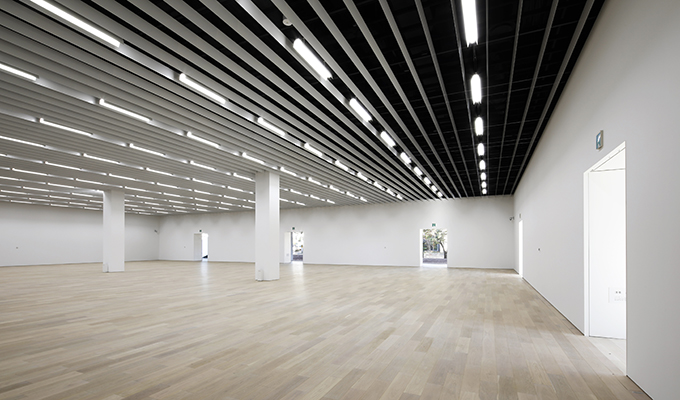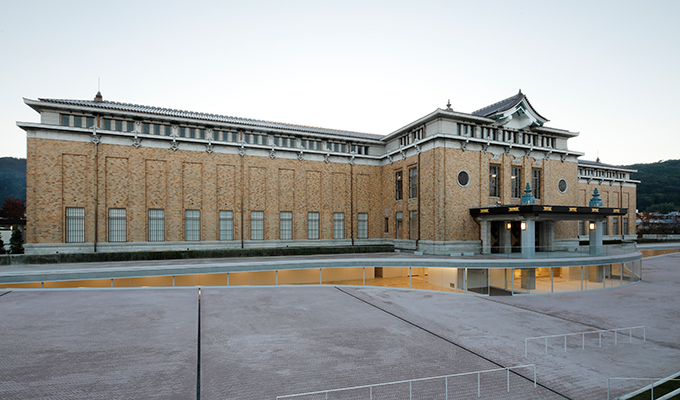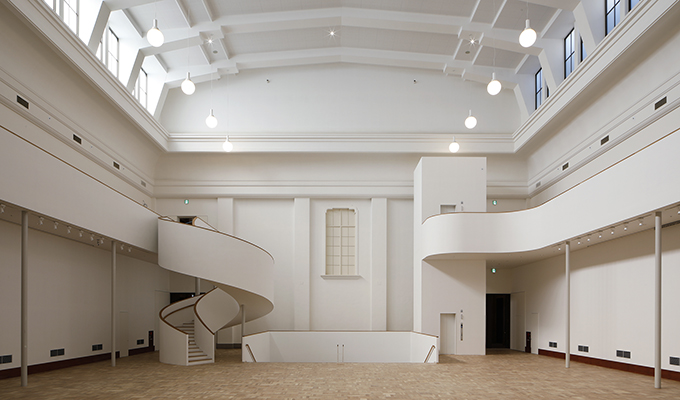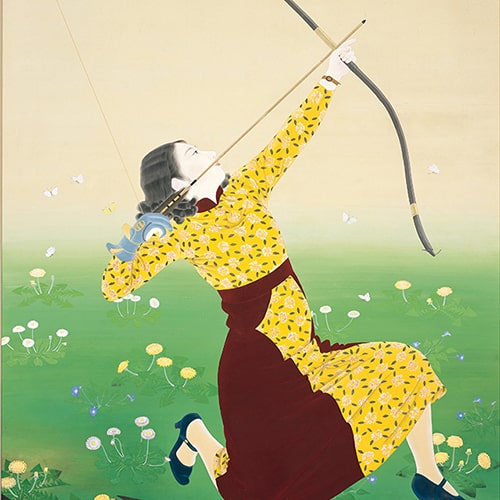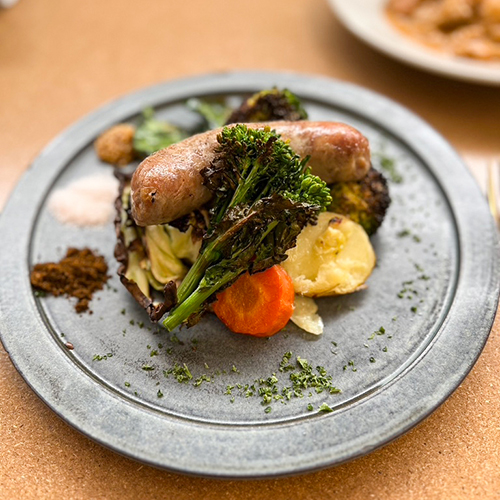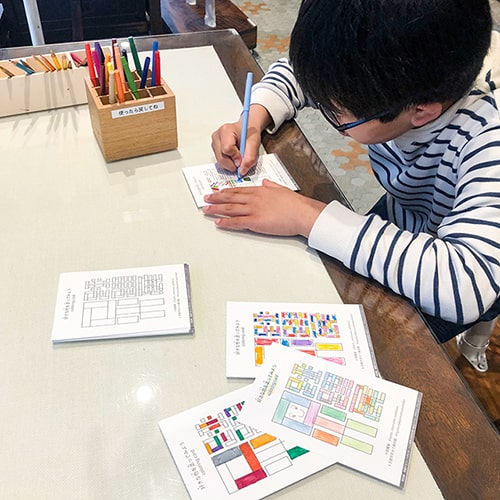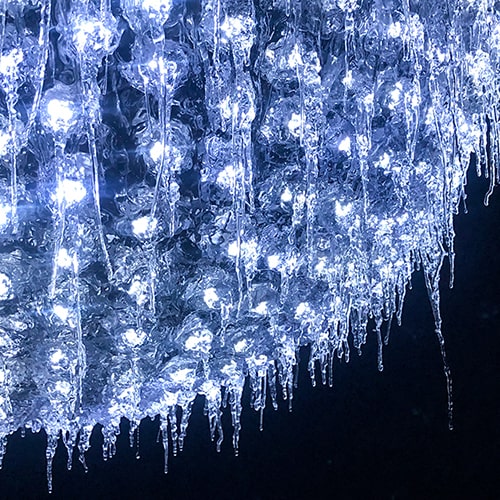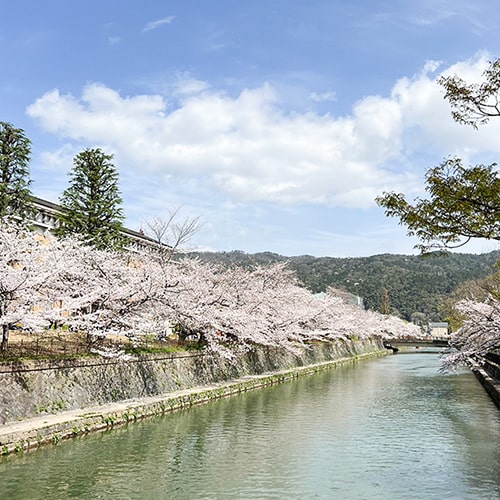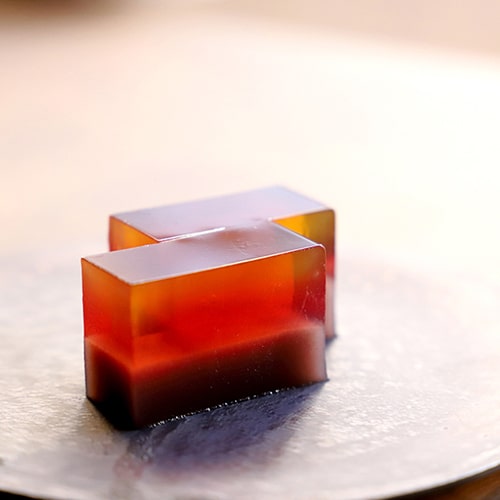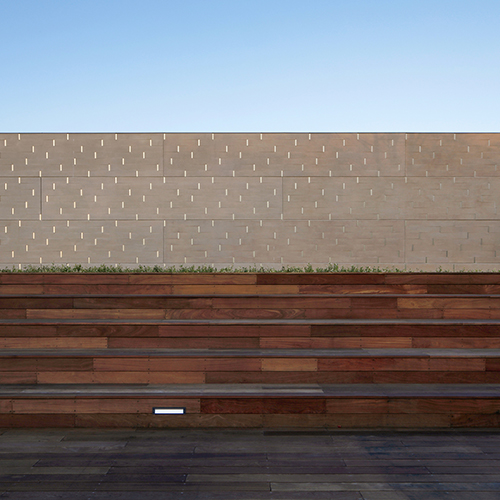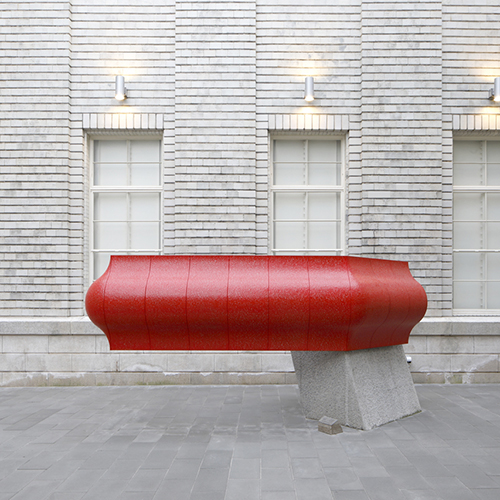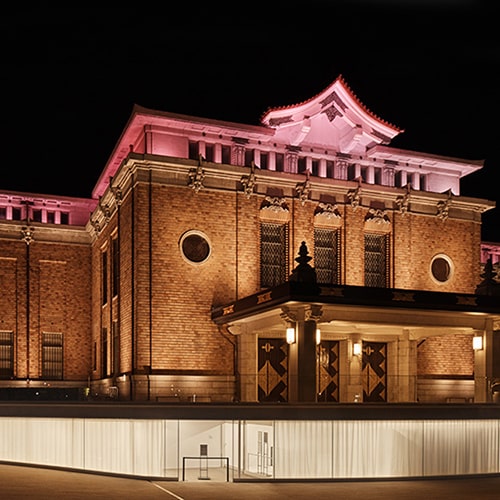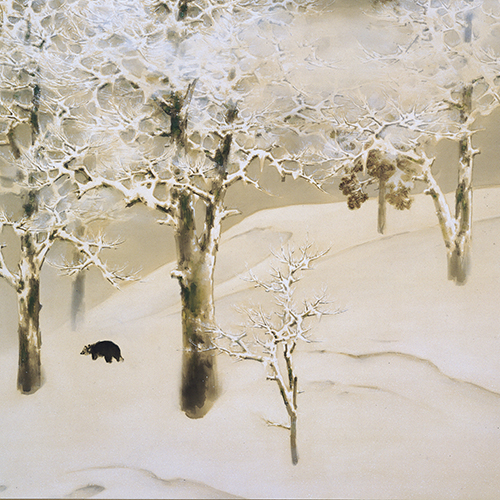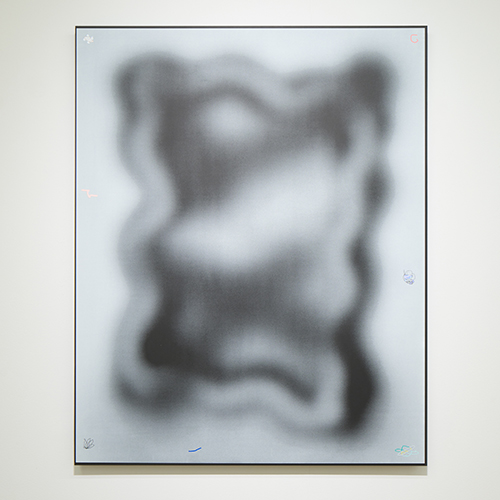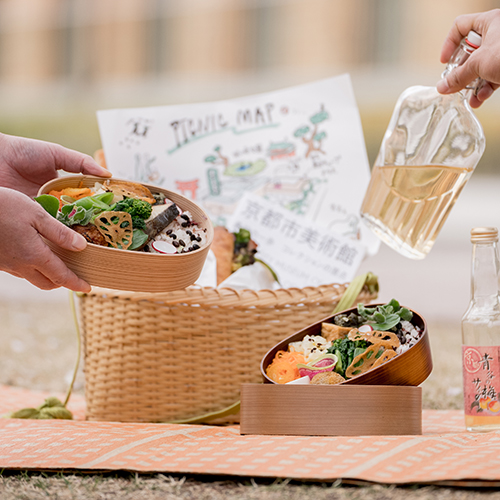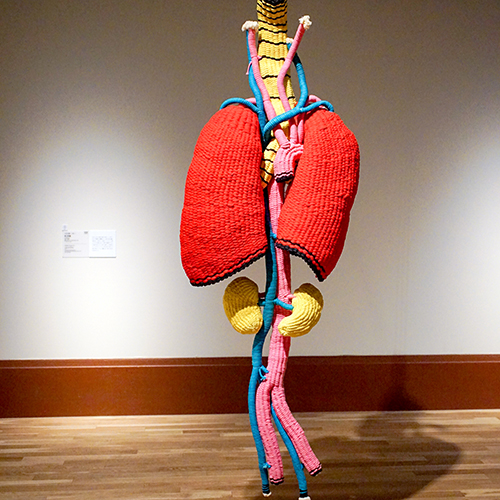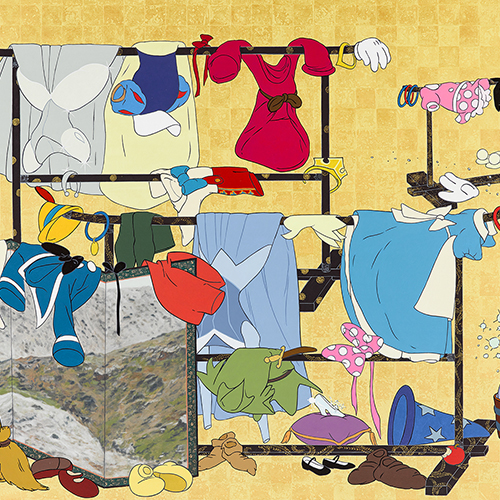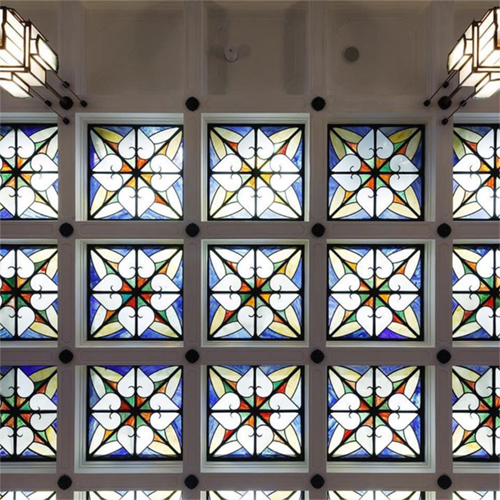The Kyoto City KYOCERA Museum of Art Inaugural Exhibition
250 Years of Kyoto Art Masterpieces
From Edo to Today
2020/10/10-2020/12/6
Venue [ Main Building(North Wing)1F | Main Building(North Wing)2F ]
-
About the Exhibition
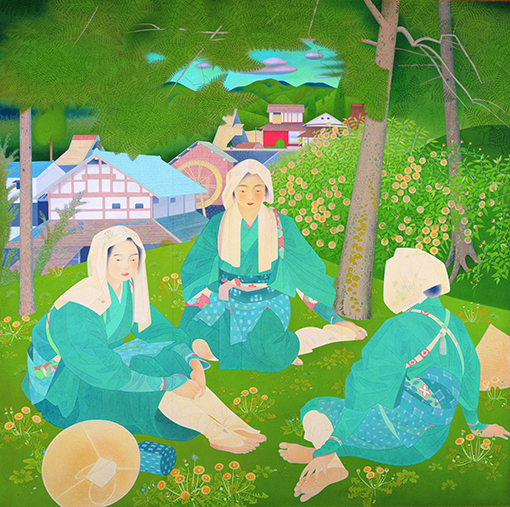
Uemura Shoen, Young Ladies, 1926 Collection of Shohaku Art Museum
On exhibit from Oct. 10 to Oct. 25This exhibition presents Japanese-style painting masterpieces culled from 250 years of Kyoto Art. In three sections, it encompasses Kyoto art dating from the late Edo period through to the present. All sections include craftsmen and calligraphers who were active at the same time. Western-style painters, sculptors, and print makers since the Meiji period, as well post-war modern artists, are also introduced.
Although the schedule and content of the Kyoto City KYOCERA Museum of Art’s opening exhibition had to be revised in response to COVID-19, the reorganized exhibition features works carefully selected to maintain the original exhibition objectives.

Uemura Shoen, Young Ladies, 1926 Collection of Shohaku Art Museum
On exhibit from Oct. 10 to Oct. 25Information
- Period
- Oct. 10 (Sat) – Dec. 6 (Sun), 2020
Part1: Oct. 10 (Sat) – Nov. 8 (Sun)
Part2: Nov. 10 (Tue)–Dec. 6 (Sun) - Time
- 10:00〜18:00
- Venue
- Main Building(North Wing)1F | Main Building(North Wing)2F
- Closed on
- Museum closed on Mondays, except Nov. 23.
- Admission
- Admission Fee: Adult ¥1,600 (Group ¥1,400)
University / High school student ¥1,200 (Group ¥1,000) Junior high and younger students are admitted free of charge.
Valid for one person for 2 entries: ¥ 2,800
-
Organizer: The Kyoto City KYOCERA Museum of Art Inaugural Exhibition “250 Years of Kyoto Art Masterpieces” Executive Committee (The City of Kyoto, The Asahi Shimbun, The Kyoto Shimbun, The Sankei Shimbun, Nikkei Inc., The Mainichi Newspapers, The Yomiuri Shimbun, Japan Broadcasting Corporation Kyoto Station, Mainichi Broadcasting System, Inc., Kyoto Broadcasting System Company Limited, Asahi Television Broadcasting Corporation, Television Osaka, Inc., KANSAI TELEVISION CO. LTD., Yomiuri Telecasting Corporation)

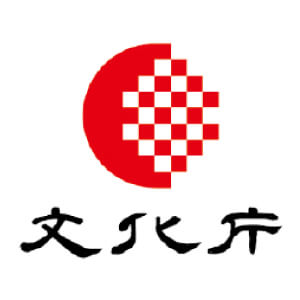
- Supported by the Agency for Cultural Affairs, Government of Japan in fiscal 2020.
-
From Edo to Meiji – Embracing Modernity
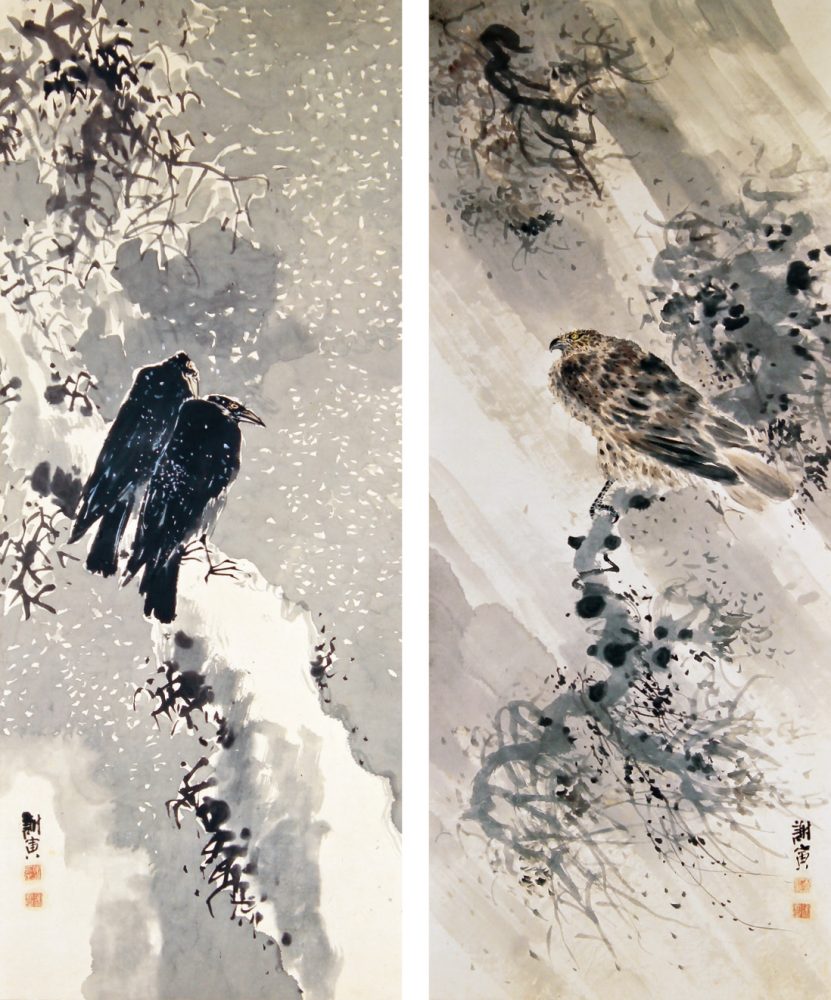
Yosa Buson, Kite and Crows, Edo Period Collection of Kitamura Museum, Important Cultural Property
On exhibit from Oct. 10 to Nov. 8Artists such as the eccentric painters Ito Jakuchu (1716 – 1800) and Soga Shohaku (1730-1781), literati tradition painter Yosa Buson (1716-1783), naturalistic painter Maruyama Okyo (1733-1795), founder of the Shijo school of painting Goshun (1752-1811), and individualist Nagasawa Rosetsu (1754-1799) were all active in Kyoto during the late Edo period. This section of the exhibition features an overview of a new age of art and craftworks dating from this time through the beginning of the Meiji period.

Yosa Buson, Kite and Crows, Edo Period Collection of Kitamura Museum, Important Cultural Property
On exhibit from Oct. 10 to Nov. 8From Meiji to Showa – The Golden Age of Kyoto Painting

Tsuchida Bakusen, Oharame (Woman Peddlers from Ohara), 1927
Collection of the National Museum of Modern Art, KyotoFrom the late Meiji to the early Showa period, attention turned to innovation in the genre of Japanese-style painting. The formation of the Kyoto Gadan group of painters, with Takeuchi Seiho (1864-1942) as a central figure, and The National Creative Painting Association (Kokuga Sosaku Kyokai) ushered in a golden age of Kyoto painting. Asai Chu (1856-1907) established a Western-style painting school in late Meiji period in Kyoto and embraced foreign influences in the field of craftworks as well. Kamisaka Sekka (1866-1942) was instrumental in the Taisho period in promoting Japanese design and paving the way for the development of craftworks as art.

Tsuchida Bakusen, Oharame (Woman Peddlers from Ohara), 1927
Collection of the National Museum of Modern Art, KyotoFrom Post-war to Today − to the Future

Kitawaki Noboru, Quo Vadis, 1949
Collection of the National Museum of Modern Art, TokyoJapanese traditional painting, craftworks, and calligraphy were questioned within the turbulence of the immediate post-war period. Contemporary art trends began to emerge from the 1960s. New organizations were formed of Japanese-style painters seeking new expression in this genre. In the field of craftworks, objects without practical use were explored, and Western-style painting became oriented to social themes while calligraphy tended towards abstract art.

Kitawaki Noboru, Quo Vadis, 1949
Collection of the National Museum of Modern Art, Tokyo -
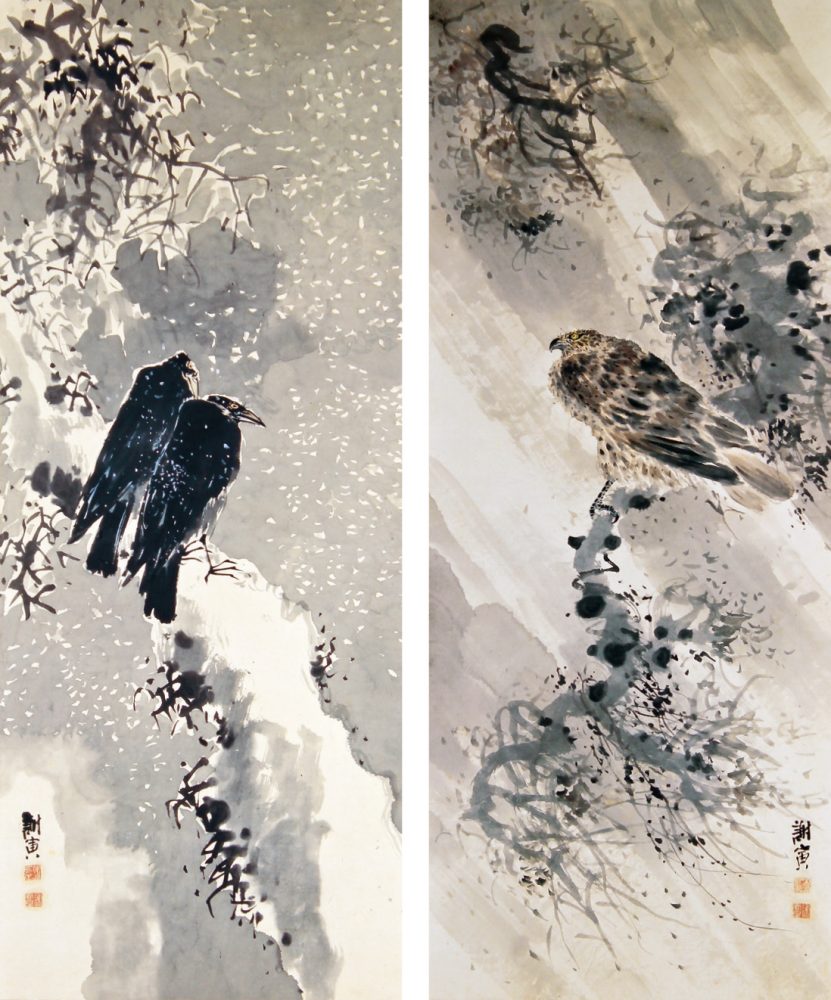
Kite and Crows, Edo Period Yosa Buson Collection of Kitamura Museum, Important Cultural Property
On exhibit from Oct. 10 to Nov. 8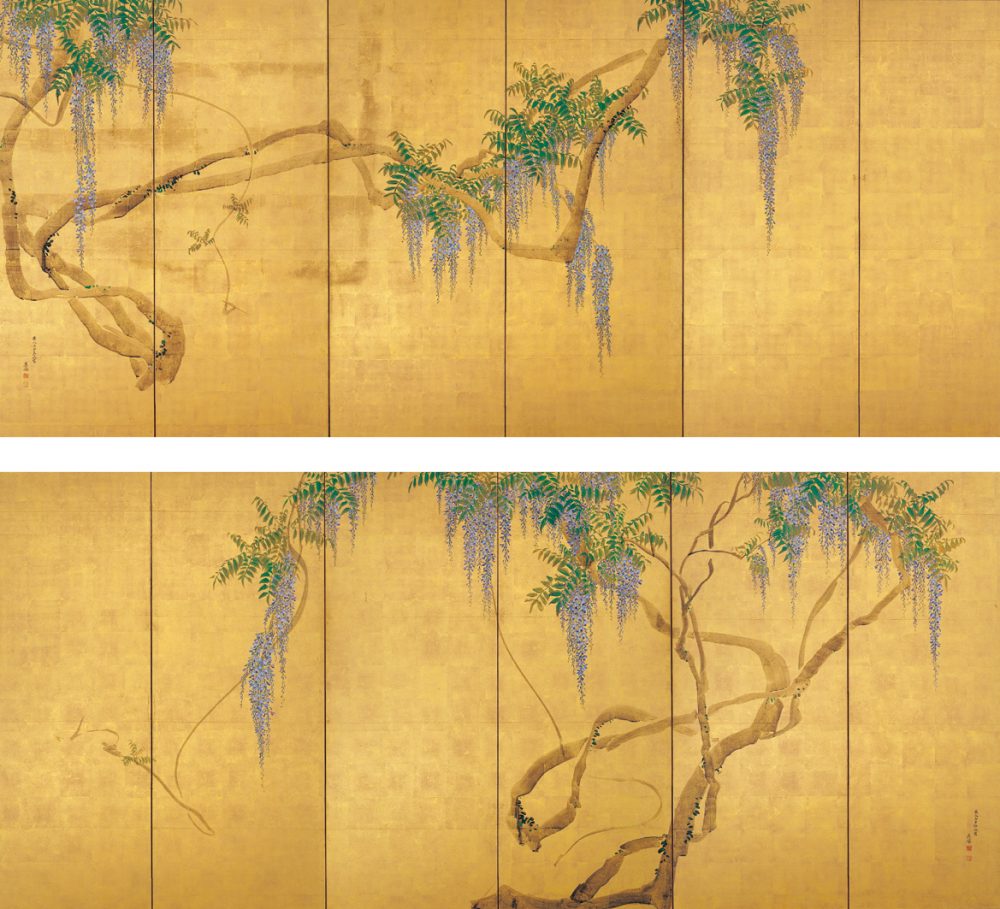
Wisteria, 1776 Maruyama Okyo Collection of Nezu Museum, Important Cultural Property
On exhibit from Oct. 10 to Nov. 8
below: left bottom: right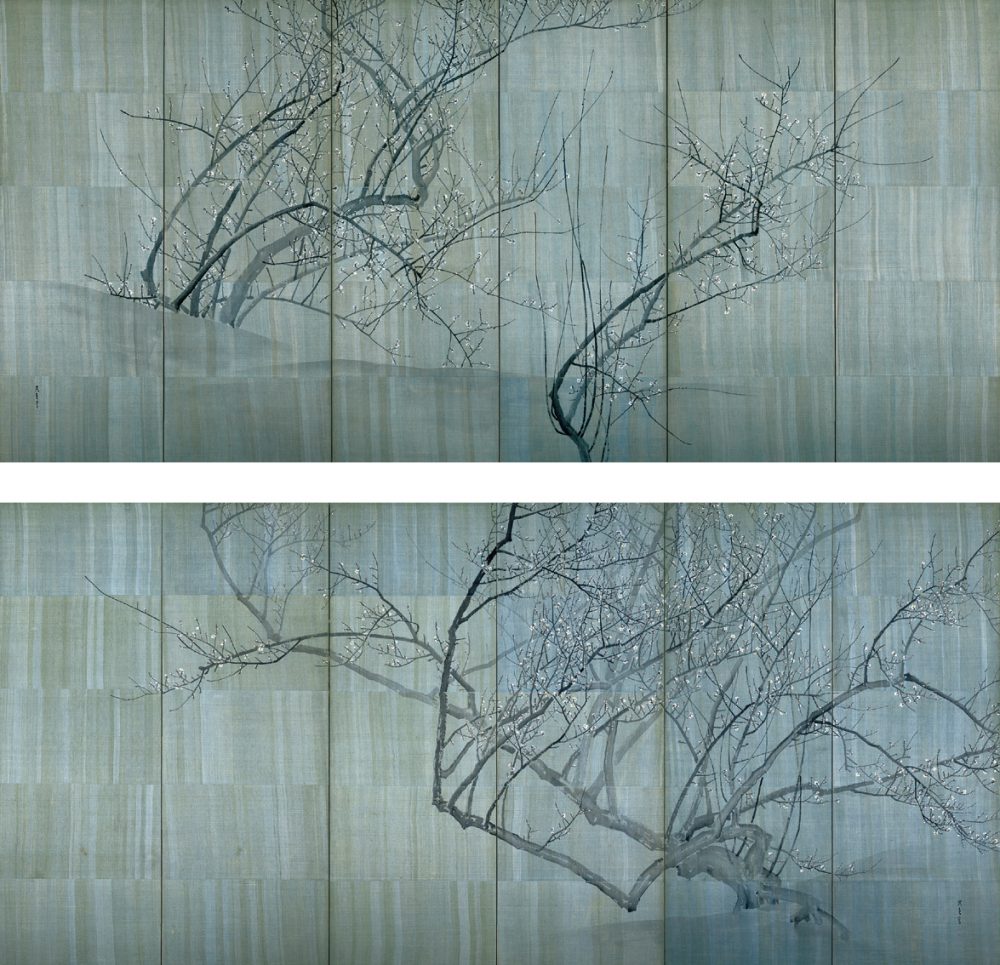
White Plum Blossoms, c.1789-90 Goshun Collection of Hankyu Culture Foundation Itsuo Art Museum, Important Cultural Property
On exhibit from Oct. 10 to Nov. 8
below: left bottom: right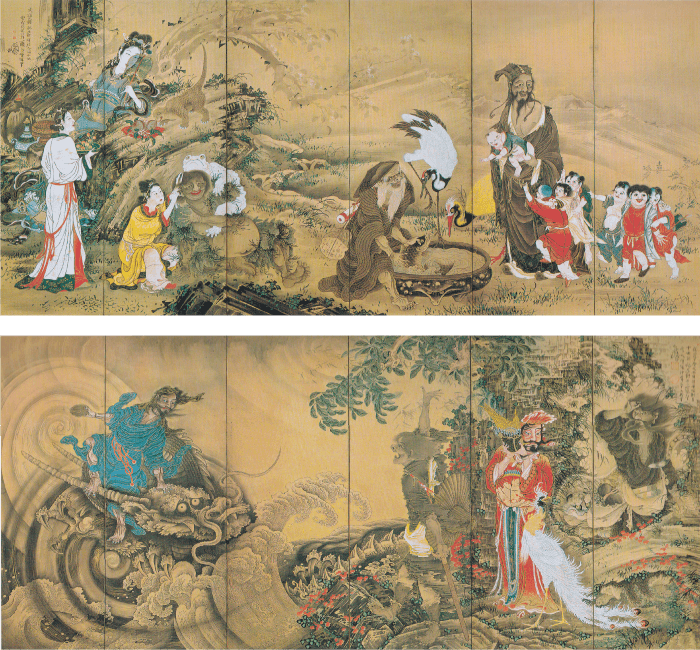
Immortals1764 Soga Shohaku Collection of Agency for Cultural Affairs, Important Cultural Property
On exhibit from Nov. 10 to Nov. 15
Tiger from Dragon and Tiger 1786 Nagasawa Rosetsu Collection of Muryoji Temple, Important Cultural Property
On exhibit from Nov. 10 to Dec. 6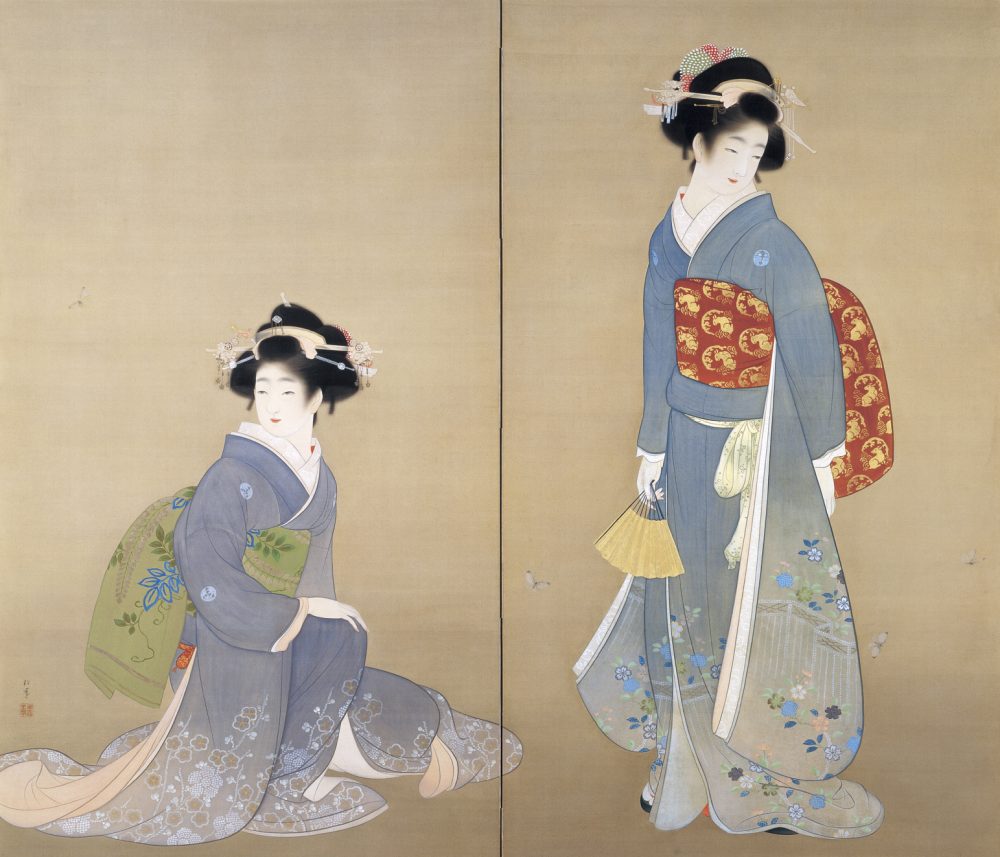
Young Ladies, 1926 Uemura Shoen Collection of Shohaku Art Museum
On exhibit from Oct. 10 to Oct. 25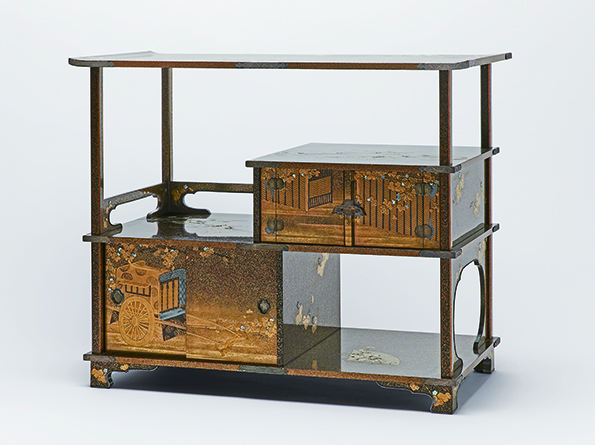
Display Shelf, Scene of Yugao from “The Tale of Genji” Design in Makie, c.1917 Kamisaka Sekka (design), Kamisaka Yukichi (lacquer) Collection of MOA Museum of Art
On exhibit from Oct. 10 to Nov. 8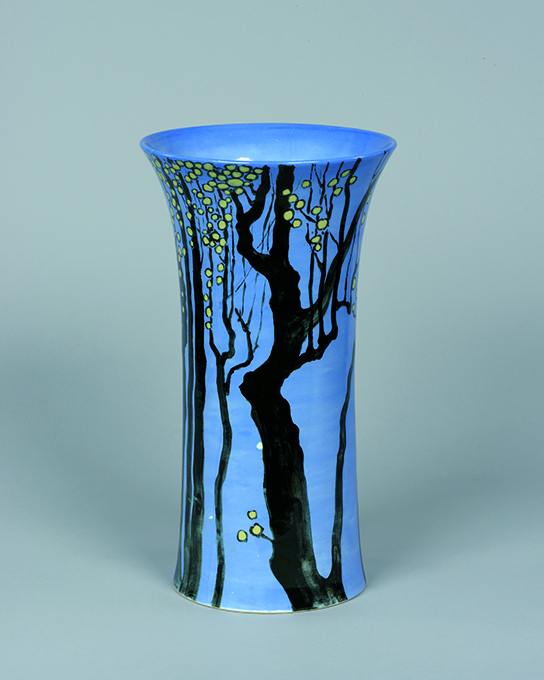
Vase with Plum Blossoms, 1902-1907 Asai Chu Collection of Museum and Archives, Kyoto Institute of Technology 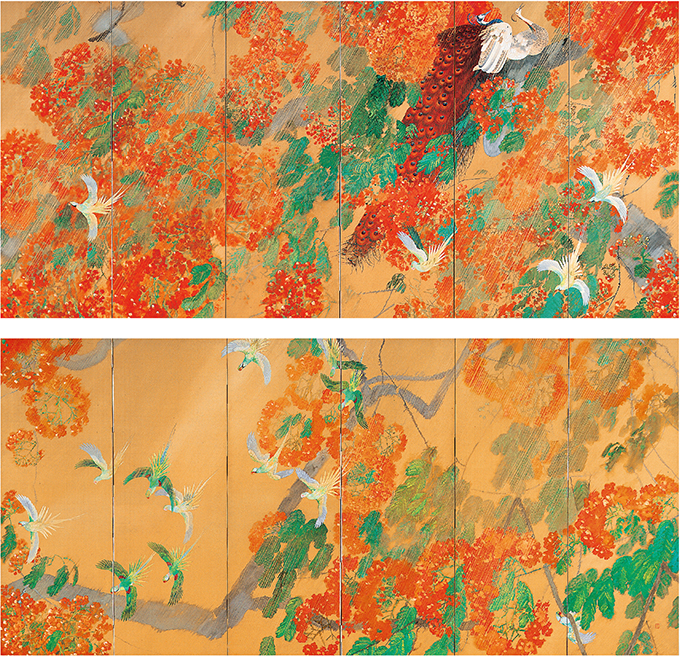
Squall in Sunshine 1919 Ishizaki Koyo Collection of Fukumitsu Art Museum, Toyama
On exhibit from Nov. 10 to Dec.6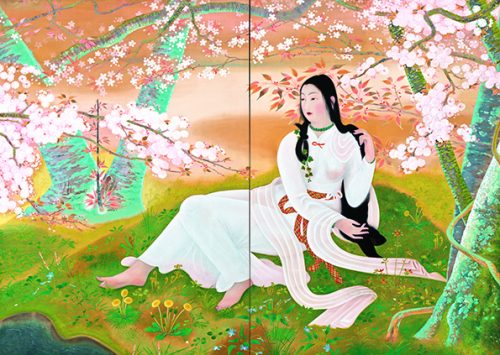
Princess Konohanasakuya 1929 Domoto Insho Collection of Kyoto Prefectural Insho-Domoto Museum of Fine Arts
On exhibit from Nov. 10 to Dec.6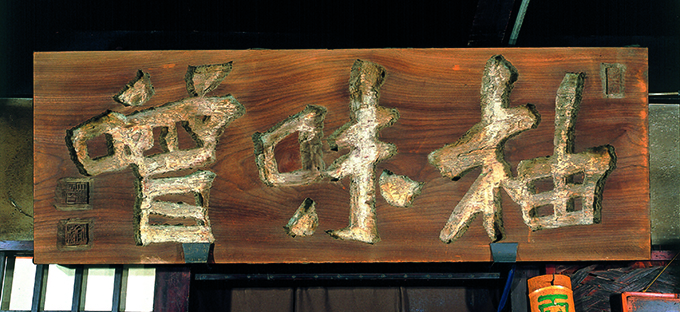
Signboard “Yumiso (miso mixed with yuzu),” 1914 Kitaoji Rosanjin Collection of Yaosan, Kyoto
On exhibit from Oct. 10 to Nov. 8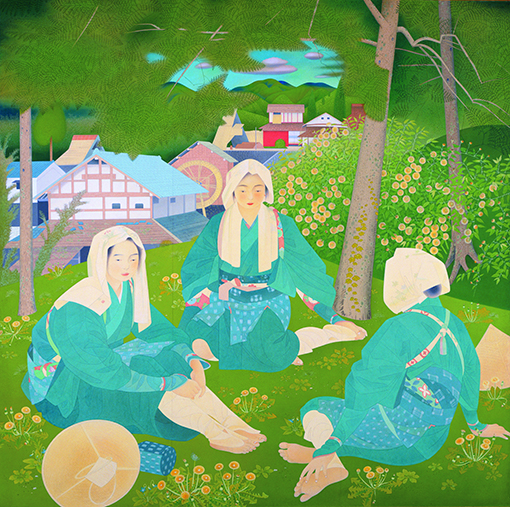
Oharame (Woman Peddlers from Ohara), 1927 Tsuchida Bakusen Collection of the National Museum of Modern Art, Kyoto 
Quo Vadis, 1949 Kitawaki Noboru Collection of the National Museum of Modern Art, Tokyo 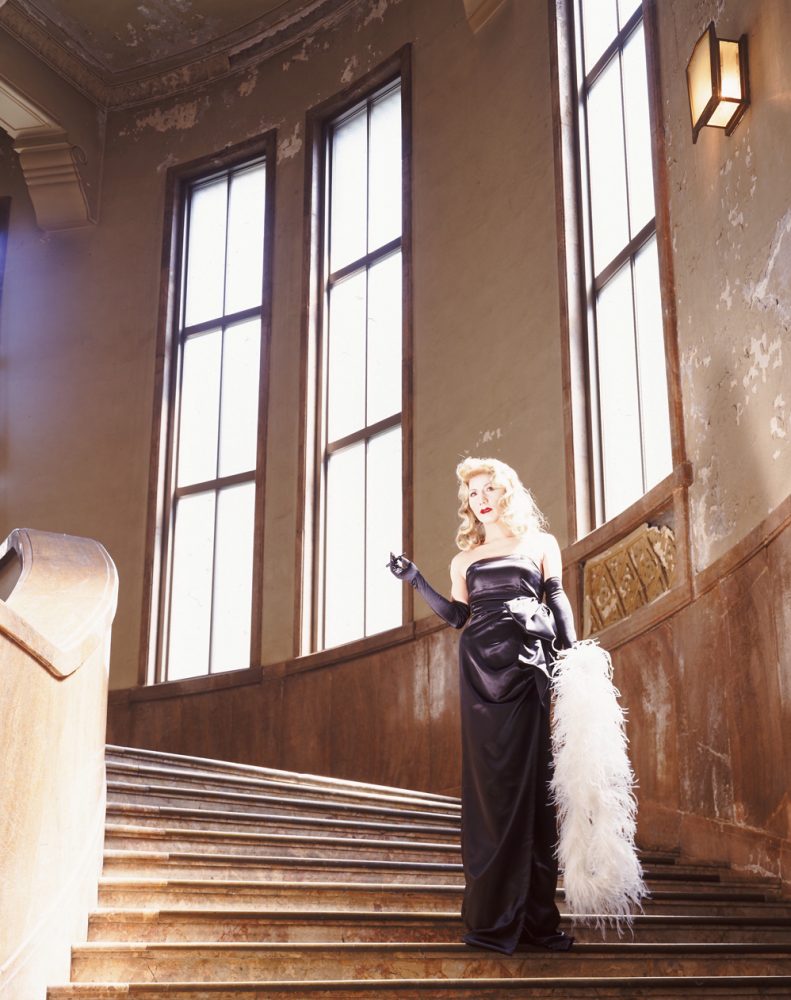
Self-portrait (Actress) / after Rita Hayworth 1, 1996 Morimura Yasumasa 
The Walk of Mr. Samsa, 1954 Yagi Kazuo

